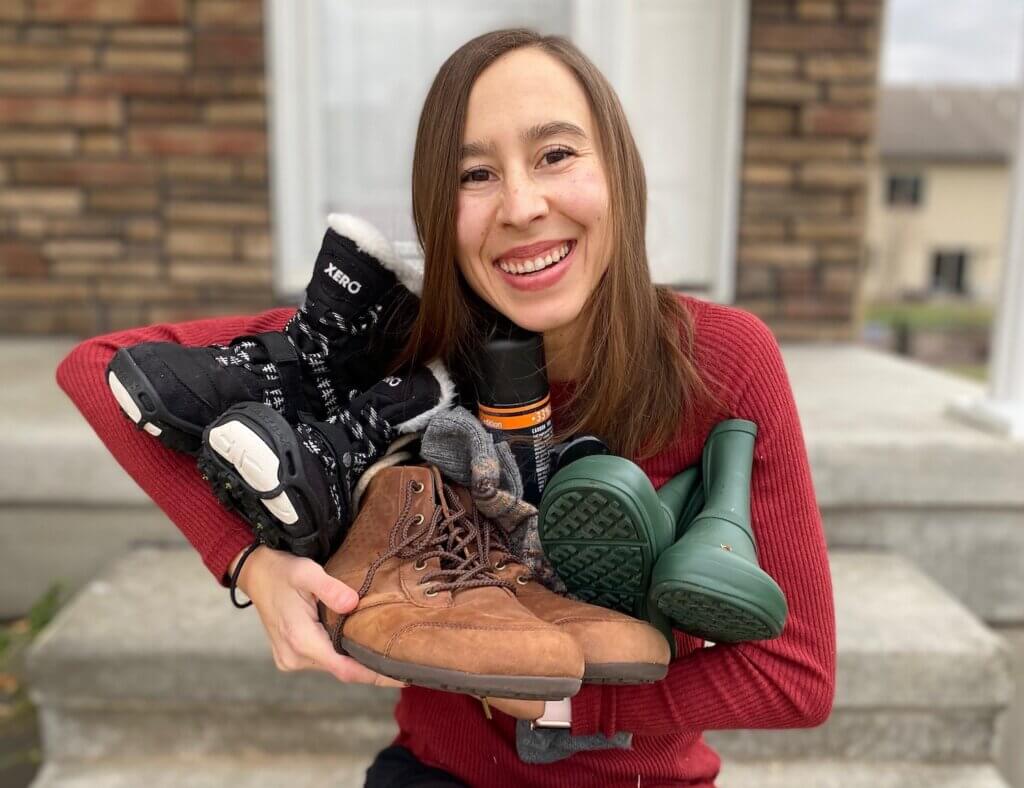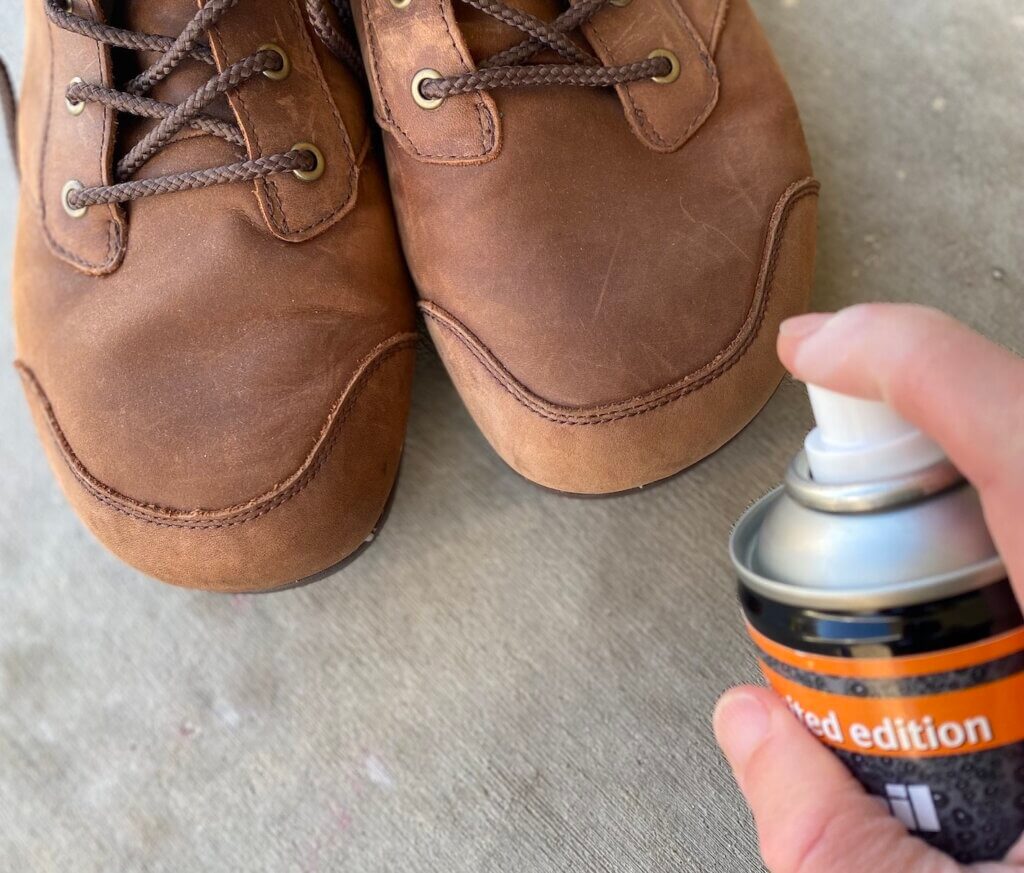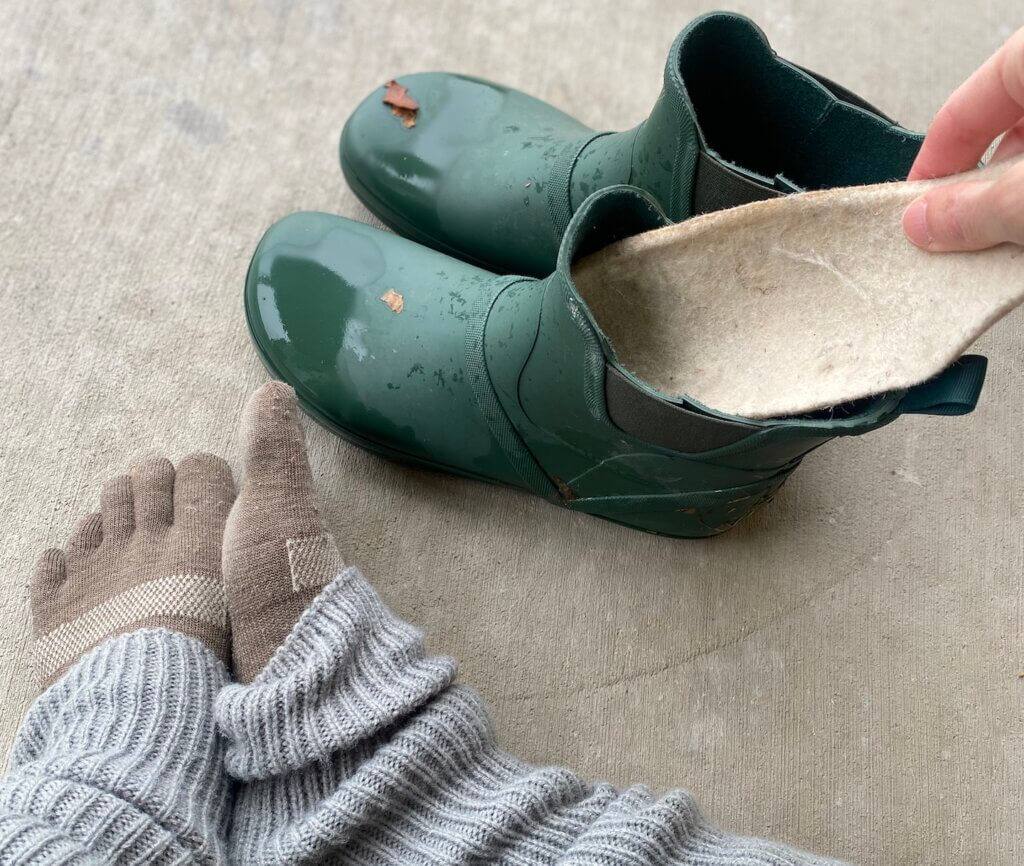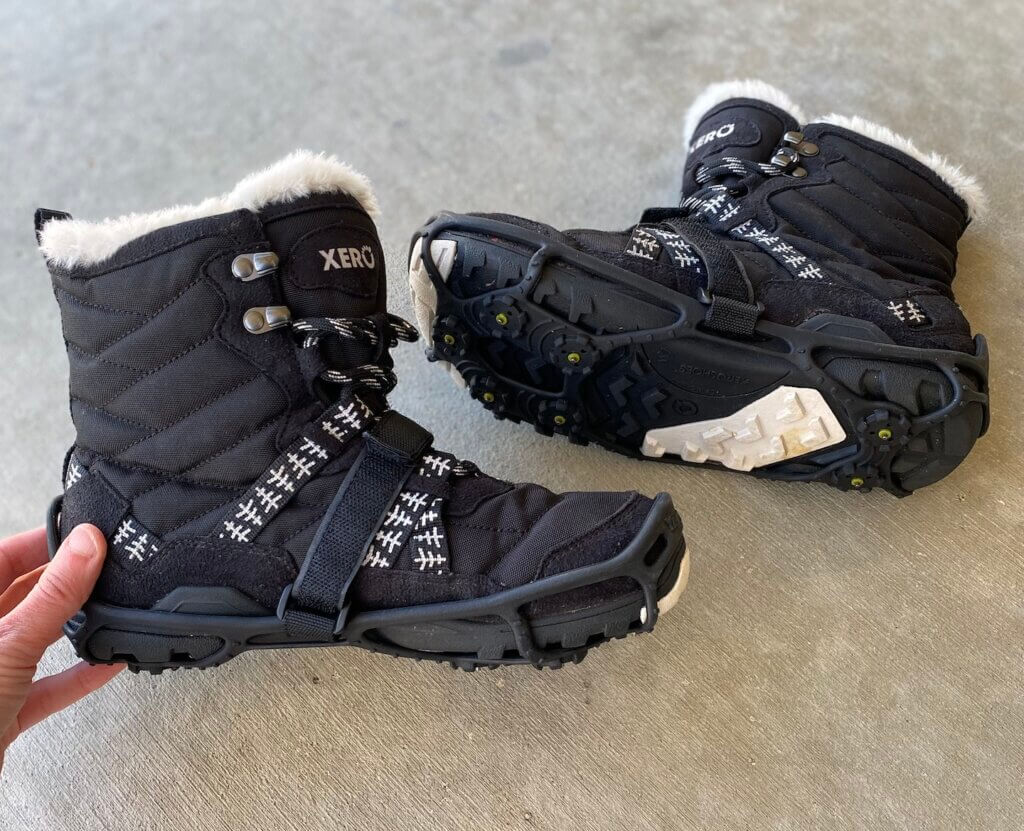How to Winterproof Your Barefoot Shoes by Anya’s Reviews
Once you experience the freedom of barefoot shoes it’s hard to go back to your old pinchy boots. And even though there are practical barefoot winter boots available, depending on your environment it might not be quite enough.
I myself had a difficult time in extreme cold and ice before I learned a few hacks. Because my feet can’t tolerate uncomfortable shoes anymore, the old heavy boots in my closet just weren’t an option! Fortunately I found some useful hacks that made all the difference.
Here are the practical tips I use to make my barefoot shoes even more functional for serious weather.
Table of Contents:
- Waterproofing
- Insoles
- Socks/Boot Liners
- Ice Cleats
1. Waterproofing
(Xero Shoes Denver Leather pictured above)
It’s a great idea to have some waterproofing products on hand, even if the shoes you buy come pretreated. Waterproofing wears off over time, and you will stay much warmer if you’re dry.
Here are my pro tips for waterproofing shoes:
- Spray’s are best for delicate materials you don’t want to change the look of.
- Waxes and oils are more effective, but might change the appearance of your shoes.
- Always test the product on a small inconspicuous spot and let dry for 24 hours before doing the whole shoe (in case you don’t like how it comes out).
- Expect to reapply. Sprays need to be reapplied every handful of wears, waxes can be applied once a season (maybe more or less depending on how much you use your shoes).
2. Insoles
(Xero Shoes Gracie pictured above)
Adding my own insoles is my favorite warmth hack. Because the soles on barefoot shoes are thin, they might feel cold in winter. Choosing warmer insoles can make a big difference, and you can easily swap them out or layer them on top inside the shoe.
Here are my favorite warm insoles that are still zero drop and flexible:
- Felted wool (you can buy sheets of it and cut your own).
- Sheepskin
- Faux fur insoles (if you are vegan)
Just keep in mind that adding thick insoles will take up more space inside your shoes. Felt insoles are thinner than sheepskin/faux fur, so might be a better option if you didn’t size up in your boots.
(Want to see how waterproof the Gracie is? Check out my video here.)
3. Socks/Boot Liners
Socks can also make a big difference in your comfort level during the winter. I choose socks with a high wool content because they are warm and they conform to your foot over time. I also often wear a pair of leg warmers over the top of my socks for an extra layer that doesn’t take away toe box space.
The boots I wear in the dead of winter are all a size bigger than my usual so I can fit thick cozy socks in them.
An alternative to thick socks is a boot liner. But you need enough space for the liner to fit fully inside, so it works best in unlined boots like the Xero Gracie. And you probably will need a size up so your foot still fits (are you noticing a theme?).
4. Ice Cleats & Running Spikes
(Xero Shoes Alpine pictured above)
I walk outside every single day no matter the weather and most of the time the soles on my barefoot boots are perfectly adequate for me. But there are days when the conditions are such that I need more grip.
That’s where ice cleats or running spikes come in. They can easily be put on over the top of a pair of barefoot winter boots, and if you live in a place with lots of snow and ice they can really keep you moving safely through the winter. I like the ones with a security strap over the top of the shoe so they don’t fall off in the snow.
You can also grab Icewalkers from Xero Shoes.
And there you have it, my best tips for winterproofing your barefoot shoes. Here’s to happy feet through the coldest, wettest months of the year!
And of course, you can explore Xero Shoes minimalist waterproof shoes and boots.
This Guest Blog Post is By Anya’s Reviews
Anya first discovered barefoot shoes after a long history of foot issues. By changing her footwear and strengthening her body she was able to completely transform her life. Today Anya is trying to change the status quo of shoes and foot health by making natural footwear options more accessible around the world. Find everything you need to start your happy feet journey at her website AnyasReviews.com.

